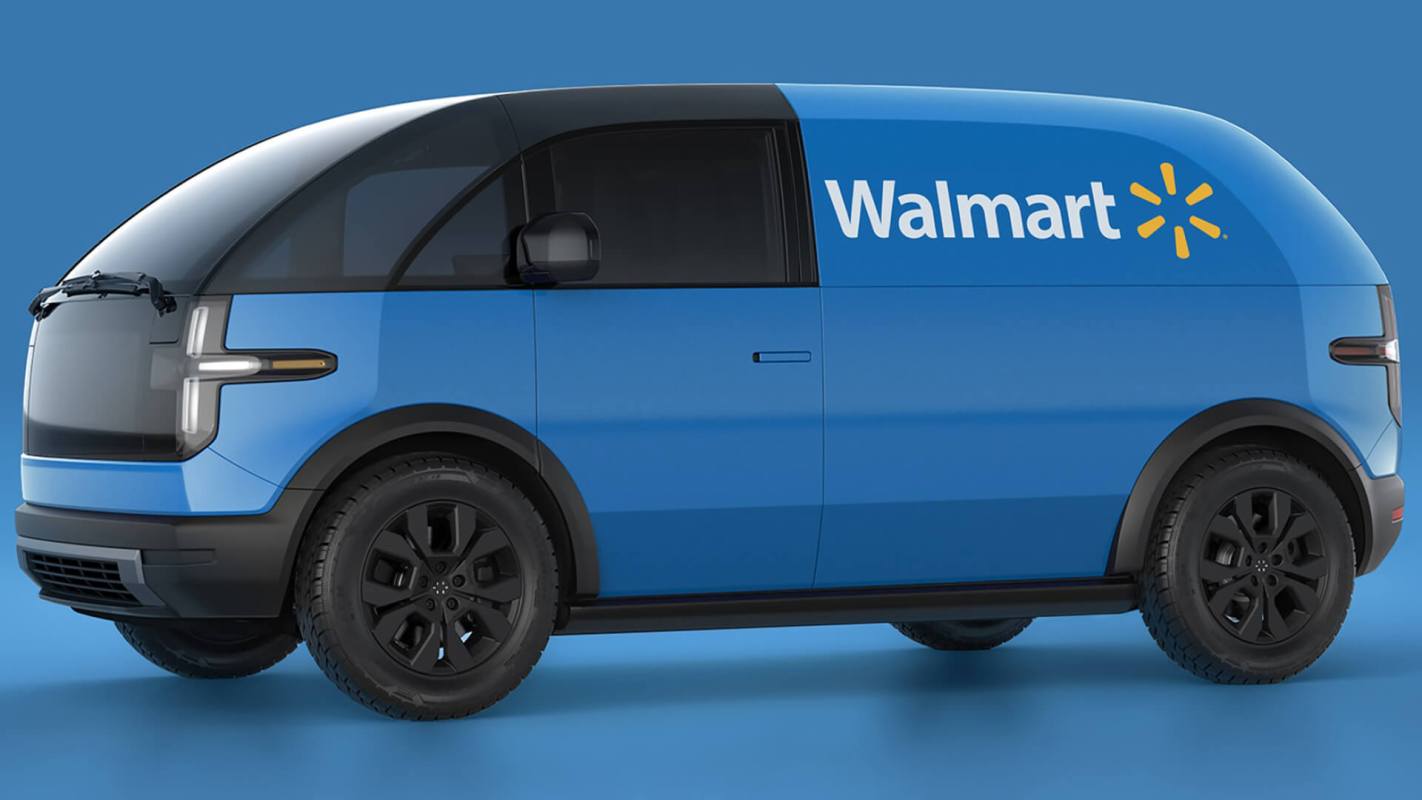Walmart is promising to buy a fleet of 4,500 all-electric "Lifestyle Delivery Vehicles" (LDVs) from startup Canoo. The electric vehicles are vans and will roll out starting in 2023.
LDV design
Walmart is purchasing LDVs from Canoo for its last-mile delivery fleet.
You've probably seen these types of vehicles in your neighborhood before — they're the ones that are used in the last part of the supply chain to deliver products from warehouses or fulfillment centers directly to your doorstep.
Canoo designed these vehicles with deliveries in mind. They are built for high-frequency stop-and-go, a necessary feature for delivery vehicles, as well as seamless panoramic windows that improve visibility for drivers. To ensure these vehicles can accommodate a variety of deliveries, Canoo added spacious and customizable cargo space.
Electric delivery vehicles meet growing demands
As e-commerce sales continue to increase, so does the demand for LDVs.
Walmart will use LDVs to deliver online orders, similarly to how Amazon vehicles transport goods from a fulfillment center to customers.
There is also potential for these LDVs to deliver for Walmart GoLocal, the retail giant's version of a delivery service for businesses looking to offer local delivery to customers, like DoorDash and Postmates.
The similarities to Amazon delivery were not accidental –– Amazon dethroned Walmart in sales in the U.S. in 2021.
Walmart is using its extensive network of stores –– which can reach 80% of Americans with same-day delivery due to its 4,756 stores located across the nation –– to compete with Amazon.
The decision to purchase a fleet of all-electric vehicles is a way for Walmart to simultaneously meet its 2040 pledge to produce no air pollution while meeting growing demands for online shopping.
A report by Shopify projects that worldwide retail e-commerce sales will surpass $6.3 billion by 2024, over a $2 billion increase since 2020.
Online shopping will only become more prevalent in the coming years, and more stores will have to evolve to meet the demands of our current "need it now" mindset caused by rapid delivery services.
Cost benefits of an electric delivery fleet
Costs for fuel have been soaring nationwide.
These high prices are burdening both individuals and corporations. A fleet of all-electric vehicles reduces delivery costs because there is virtually no fuel cost for LDVs.
And given that fuel is one of the highest operating costs for fleets, electric vehicles will cut delivery costs without cutting corners.
LDVs also reduce maintenance costs because electric vehicles use fewer fluids. Gasoline-powered vehicles, on the other hand, require the same fluids and the addition of oil changes, transmission flushes, and other engine fluid replacements, causing maintenance fees to be far more expensive for gas-powered cars than electric vehicles.
Electric delivery vans help people and the planet, too
The most special thing about electric vehicles is that they do not produce any air pollution while driving, whereas gasoline-powered cars do.
Even when accounting for manufacturing, electric vehicles typically produce fewer harmful air pollutants than gasoline-powered vehicles.
Because LDVs do not produce toxic air pollution, they help people with asthma or other respiratory issues breathe more easily. LDVs also help cool the planet by not contributing to the harmful air pollution that traps heat in the atmosphere and causes sweltering temperatures and more intense extreme weather events in our communities.
Walmart is one of many retailers adding electric vehicles to its delivery fleet to reduce spending on fuel, meet growing demands for online shopping, and create a cooler future where we can all breathe a little more easily.
Follow The Cool Down on Instagram and subscribe to our newsletter.








